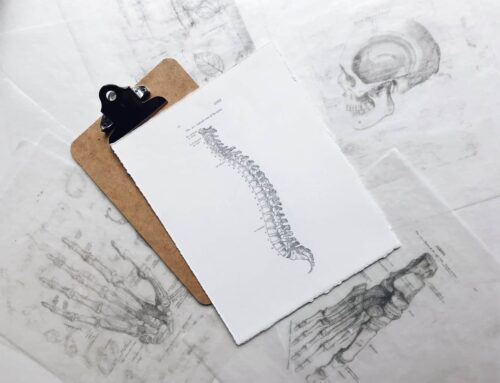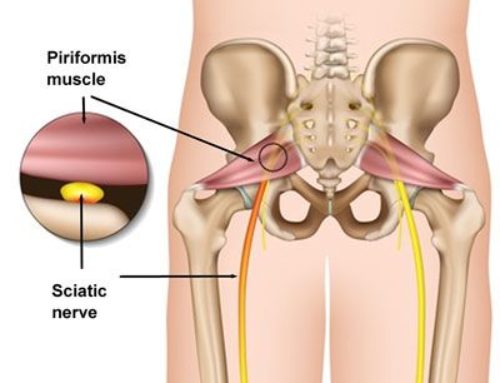If you’re struggling with nerve pain, everyday activities can become a major challenge. Although there are many varieties of nerve pain that you can experience, sciatic nerve pain is one of the most common. So, what exactly is sciatic nerve pain, and how can you address it in your day to day life?
Whether you’re seriously struggling with sciatic nerve pain right now, or simply hoping to prevent this common condition from limiting your activity level in the future, keep reading to get a better understanding of this condition and how you can minimize its impact on your life.
What Is Sciatic Nerve Pain?
To better understand sciatic nerve pain, let’s start with some anatomy. Your sciatic nerve is a large, hose-like nerve that runs through your buttock and upper thigh. The sciatic nerve is very important for receiving sensory information and sending motor signals that produce muscle activity in your hip and thigh.
When we talk about sciatic nerve pain, we’re referring to any nerve pain along the path of your sciatic nerve. This nerve pain can include sensations such as burning, aching, or tingling, and usually involves the back of your thigh. Most of us have heard the term “sciatica” at least a few times in our lives, and these terms are often used interchangeably.
What Causes Sciatic Nerve Pain?
At the most basic level, sciatic nerve pain happens because the sciatic nerve has become irritated for one reason or another. Two of the most common causes of sciatic nerve pain are inflammation and mechanical pressure.
Inflammation can occur for a number of reasons, but usually happens when the body is recovering from some sort of injury or insult. As part of the body’s natural healing process, inflammation involves a number of chemicals that can irritate nearby structures in the body. For example, a muscle strain in your hip could cause inflammation nearby that ultimately irritates your sciatic nerve, causing sciatic nerve pain.
Mechanical pressure occurs when something presses or pushes against the sciatic nerve and causes irritation. This can be especially common during everyday activities, such as sitting on a wooden chair or performing an exercise like sit ups. One less common example is known as piriformis syndrome, where the sciatic nerve directly passes through the piriformis, a small muscle in the hip, and becomes irritated when the piriformis muscle is under tension.
5 Things to Know About Managing Sciatic Nerve Pain
Regardless of how your sciatic nerve pain started, it’s important to take control of your pain and maximize your function as much as you can. Here are a few guiding principles to help you feel and perform your best.
Remember, Pain Doesn’t Equal Damage
At the most basic level, pain is your body’s way of telling you that something isn’t right. However, pain isn’t a great indicator of when something in your body is damaged. This is important to recognize because when you feel pain, you might stop doing your favorite activities because you’re afraid of causing more damage.
While it can be important to slow down and listen to your body if you’re having pain, make sure that your pain isn’t causing fear that stops you from moving or socializing altogether. When you think this way instead, you can build a healthier relationship with your sciatic nerve pain and experience less disability as a result of it.
Most Nerve Pain Isn’t Serious
You’ve probably heard things like “I have a bad hip because of my sciatica” or “my sciatica stops me from exercising” from friends or family in the past. When we hear things like this from our friends, or from our doctor, it can make us feel like sciatica is a serious problem that might cause us pain and disability for life.
The good news is that sciatic nerve pain rarely causes any serious problems and can usually be resolved with the right care plan. This means that even if you’re dealing with sciatic nerve pain, it’s important to stay positive and know that you will likely make a full recovery.
Keep in mind that nerve pain also isn’t something to be ignored, and it may not go away on its own. For this reason, it’s especially important to find help from a trained professional and start your recovery early.
Keep Your Body Moving
No matter your age or experience level, regular physical activity is one of the best things you can do for many aspects of your health, which holds true with sciatic nerve pain. Even when you’re feeling hesitant to move your body, it’s important to find opportunities in your day to move your legs, hips, and back.
The nerves of your body need regular activity, good circulation, and enough space to function normally. Luckily, regular physical activity helps to provide all of these things to your nerves, including your sciatic nerve. When you do things like change positions, walk, and exercise, you’re helping promote normal function of your sciatic nerve and the tissues surrounding it. Even if physical activity is slightly uncomfortable, the benefits often outweigh the potential negatives for problems like sciatic nerve pain.
It can be helpful to do things like setting an alarm on your phone, making plans with friends, and walking to the grocery store to get enough activity during your day. Of course, you’ll want to start slow and gradually adjust your activity based on how much pain you’re having. Remember, motion is lotion!
Focus on Function
When you’re dealing with a problem like sciatic nerve pain, it’s very easy to become focused on the amount of pain or other symptoms that you have. This can become discouraging, and might make you feel like you’re not getting better. Even when you are making a successful recovery, your symptoms can still vary from day to day.
For this reason, it’s important to focus on the things that you can do despite having sciatic nerve pain. This is valuable because even if you’re struggling with pain, you can still see improvements and enjoy big wins in your everyday life that aren’t centered around your pain rating.
Try to keep track of things like how far you can walk, how long you can do chores around the house, or how much of your normal workout you can do before being limited by your pain. As an added bonus, focusing on function can also take some of your attention away from your sciatic nerve pain, which can help with your recovery.
Don’t Be Afraid to Ask For Help
Even though sciatic nerve pain is rarely serious and can resolve on its own with the right habits, it can still have a big impact on your daily life. When this happens, you’ll want to get help from a professional with experience in treating sciatic nerve pain.
It’s also important to know that even if a problem like sciatic nerve pain resolves on its own, there may still be an undetected root cause that could cause the problem to return in the future if unaddressed. Keeping this in mind, getting the right help can help equip you with the tools to manage your sciatic nerve pain now and for the long term.
How Can Working With An Expert at DPT Help You Treat Your Sciatic Nerve Pain?
Whether sciatic nerve pain has been a consistent problem for you, or you recently started having sciatic nerve pain for the first time, you can get better results with help from our team at DPT. Regardless of your previous knowledge or fitness level, you can expect to receive top-of-the-line treatment with ongoing support every step of the way. Here’s what your first session with us will include:
- Detailed assessment of your personal history and current condition.
- A treatment plan personalized to your assessment and activity goals.
- Thorough understanding of the root cause of your condition, and how to care for yourself.
- Honest activity recommendations to help you keep active doing the things that you love most.
- Coaching and support from our team of experts throughout your recovery.
If you’re ready to make real progress with your sciatic nerve pain, schedule a discovery visit today.






